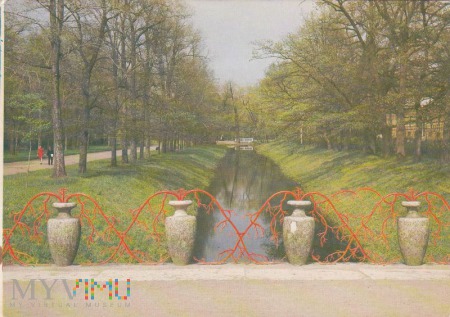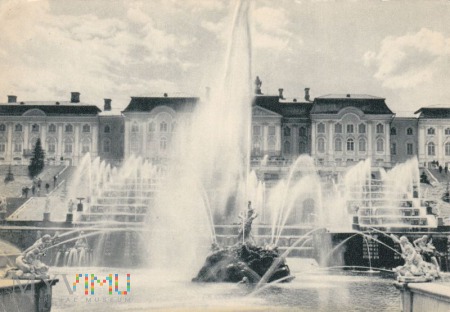5. Свердловск (Sverdlovsk)
Свердловск Исторический сквер
Sverdlovsk
Historical public garden
Wikipedia:
Jekaterynburg (ros. Екатеринбург, Jekatierinburg) – miasto w azjatyckiej części Rosji położone po wschodniej stronie środkowego Uralu, w obwodzie swierdłowskim, nad rzeką Iset. W latach 1924–1991 nosiło nazwę Swierdłowsk (ros. Свердловск) na cześć bolszewickiego przywódcy Jakowa Swierdłowa.
Yekaterinburg (Russian: Екатеринбу́рг, IPA: [jɪkətʲɪrʲɪnˈburk]), alternatively romanised Ekaterinburg, is the fourth-largest city in Russia and the administrative centre of Sverdlovsk Oblast, located on the Iset River east of the Ural Mountains, in the middle of the Eurasian continent, on the Asian side of the boundary between Asia and Europe. It is the main cultural and industrial centre of the oblast. In 2017, it had an estimated population of 1,488,791. Yekaterinburg has been dubbed the "third capital of Russia", as it is ranked third by the size of economy, culture, transportation and tourism. It is located about 1,420 kilometres (880 mi) to the east of Moscow.
Yekaterinburg was founded on 18 November 1723 and named after the Russian emperor Peter the Great's wife, who after his death became Catherine I, Yekaterina being the Russian form of her name. The city served as the mining capital of the Russian Empire as well as a strategic connection between Europe and Asia at the time. In 1781, Catherine the Great gave Yekaterinburg the status of a district town of Perm Province, and built the main road of the Empire, the Siberian Route, through the city. Yekaterinburg became a key city to Siberia, which had rich resources, and was known as the "window to Asia", a reference to Saint Petersburg as a "window to Europe". In the late 19th century, Yekaterinburg became one of the centres of revolutionary movements in the Urals. In 1924, after Russia became a socialist state, the city was named Sverdlovsk (Russian: Свердло́вск) after the Bolshevik leader Yakov Sverdlov. During the Soviet era, Sverdlovsk was turned into an industrial and administrative powerhouse. In 1991, after the fall of the Soviet Union, the city returned to its historical name.
Yekaterinburg is one of the most important economic centres in Russia, and the city had experienced economic and population growth recently. Some of the tallest buildings in Russia are located in the city
Свердловск Исторический сквер
Sverdlovsk
Historical public garden
Wikipedia:
Jekaterynburg (ros. Екатеринбург, Jekatierinburg) – miasto w azjatyckiej części Rosji położone po wschodniej stronie środkowego Uralu, w obwodzie swierdłowskim, nad rzeką Iset. W latach 1924–1991 nosiło nazwę Swierdłowsk (ros. Свердловск) na cześć bolszewickiego przywódcy Jakowa Swierdłowa.
Yekaterinburg (Russian: Екатеринбу́рг, IPA: [jɪkətʲɪrʲɪnˈburk]), alternatively romanised Ekaterinburg, is the fourth-largest city in Russia and the administrative centre of Sverdlovsk Oblast, located on the Iset River east of the Ural Mountains, in the middle of the Eurasian continent, on the Asian side of the boundary between Asia and Europe. It is the main cultural and industrial centre of the oblast. In 2017, it had an estimated population of 1,488,791. Yekaterinburg has been dubbed the "third capital of Russia", as it is ranked third by the size of economy, culture, transportation and tourism. It is located about 1,420 kilometres (880 mi) to the east of Moscow.
Yekaterinburg was founded on 18 November 1723 and named after the Russian emperor Peter the Great's wife, who after his death became Catherine I, Yekaterina being the Russian form of her name. The city served as the mining capital of the Russian Empire as well as a strategic connection between Europe and Asia at the time. In 1781, Catherine the Great gave Yekaterinburg the status of a district town of Perm Province, and built the main road of the Empire, the Siberian Route, through the city. Yekaterinburg became a key city to Siberia, which had rich resources, and was known as the "window to Asia", a reference to Saint Petersburg as a "window to Europe". In the late 19th century, Yekaterinburg became one of the centres of revolutionary movements in the Urals. In 1924, after Russia became a socialist state, the city was named Sverdlovsk (Russian: Свердло́вск) after the Bolshevik leader Yakov Sverdlov. During the Soviet era, Sverdlovsk was turned into an industrial and administrative powerhouse. In 1991, after the fall of the Soviet Union, the city returned to its historical name.
Yekaterinburg is one of the most important economic centres in Russia, and the city had experienced economic and population growth recently. Some of the tallest buildings in Russia are located in the city
Data dodania: 22 maja 2019
Datowanie przedmiotu:
1988
Miejsce pochodzenia: ZSRR
Stan eksponatu: Bardzo dobry
Tagi:
 sverdlovsk
sverdlovsk
 jekaterynburg
jekaterynburg
 historical public garden
historical public garden
 pocztowki
pocztowki
 zdzkul
zdzkul
 postkarte
postkarte
 pohlednice
pohlednice
 postcard
postcard
 otkrytka
otkrytka
 cartolina
cartolina
 razglednica
razglednica
 poshtenska kartichka
poshtenska kartichka
 bilhete postal
bilhete postal
 lystivka
lystivka
 sverdlovsk
sverdlovsk
 jekaterynburg
jekaterynburg
 historical public garden
historical public garden
 pocztowki
pocztowki
 zdzkul
zdzkul
 postkarte
postkarte
 pohlednice
pohlednice
 postcard
postcard
 otkrytka
otkrytka
 cartolina
cartolina
 razglednica
razglednica
 poshtenska kartichka
poshtenska kartichka
 bilhete postal
bilhete postal
 lystivka
lystivka
Pomóż uzupełnić opis  Zauważyłeś błąd lub wiesz coś więcej na temat tego eksponatu?
Zauważyłeś błąd lub wiesz coś więcej na temat tego eksponatu?
Zasugeruj właścicielowi poprawiony opis i Zdobądź punkty dla swojego muzeum!
Zasugeruj właścicielowi poprawiony opis i Zdobądź punkty dla swojego muzeum!
Eksponat jest widoczny w następujących kategoriach serwisu.
Eksponat został odwiedzony łącznie 163 razy od 22 maja 2019
obserwuj komentarze do tego eksponatu 
|
Twój komentarz
|
|
|
Dodaj komentarz
| |
Publikowane komentarze są prywatnymi opiniami użytkowników portalu. MyViMu.com nie ponosi odpowiedzialności za ich treść.
© Copyright 2010-2024 MyViMu.com
Ta witryna korzysta z plików cookies w celu dostosowania zawartości do preferencji użytkownika oraz tworzenia anonimowych statystyk, również przy użyciu usługi Google Analytics. Kliknięcie "Tak, zgadzam się" lub dalsze korzystanie z serwisu bez wybrania żadnej z opcji oznacza akceptację cookies i przetwarzania danych zbieranych automatycznie, zgodnie z Regulaminem.
Kliknij tutaj, jeśli chcesz dowiedzieć się więcej o wykorzystaniu danych zbieranych automatycznie.










 Dodaj eksponat
Dodaj eksponat

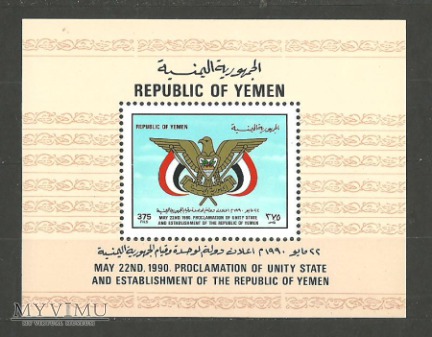
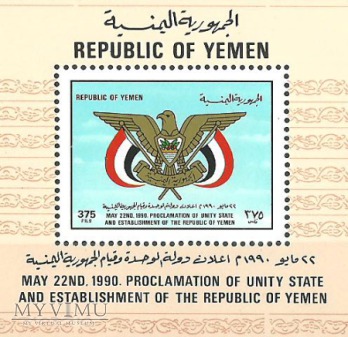


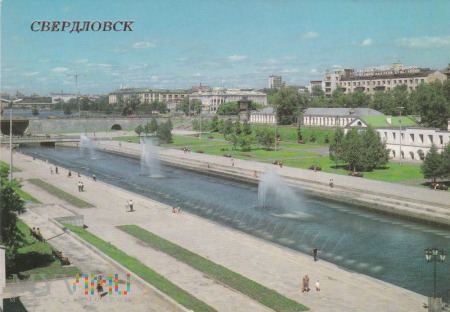
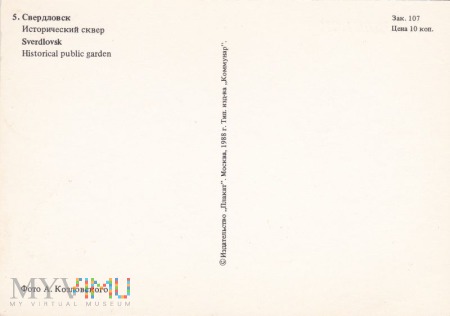
 Ciekawy eksponat
Ciekawy eksponat



